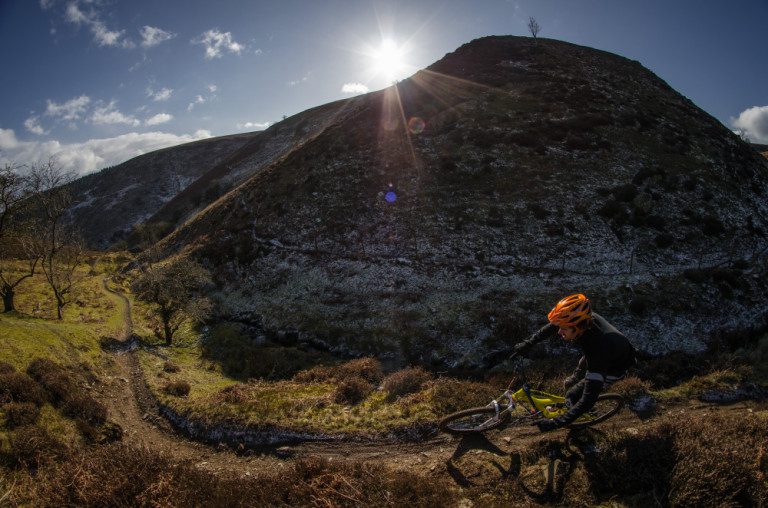A trail bike is what most of us are looking for when we're shopping for a new mountain bike. A good all round off-road bicycle that can turn its hand to any sort of riding.
Trail bikes are great all-rounder mountain bikes. Trail bikes are the most versatile bikes for off-road riding. They’re designed to do the sort of riding that most mountain bikers do.
They’re capable at handling technical terrain without carrying an excess of weight that would make them overly tiring on long rides.

Hardtail or full suspension?
Hardtails will be lighter than similarly priced full-suspension bikes. Lighter is always good when cycling but with mountain biking you need to factor in comfort and grip too.
If you’re looking at entry level or mid-price point bikes for Trail riding then hardtails are usually the best option. The considerable weight saving over full suspension designs will be much more significant.
When looking at high end Trail bikes then the weight saving becomes less significant and the efficiency, control and fatigue-reducing qualities of a full suspension bike become more important.
Suspension
Trail bikes generally have between 100mm and 140mm of travel. The suspension will offer adjustable rebound damping – higher end models have adjustable compression damping too – but on Trail bikes it’s usually a matter of ‘set and forget’ ie. you set up the suspension once and then leave it alone and just ride your bike.
Longer travel, more expensive Trail bikes will have bolt-thru fork axles as opposed to QRs, for increased front end stiffness.
If you’re more interested in technical riding on rougher terrain, having 120mm-140mm of suspension travel is a good idea. If your riding isn’t so rough, then 100mm-120mm bikes will be capable enough with less weight penalty.
Frame material
Most Trail bikes have aluminium frames. Some top end bikes are made from carbon. Both of these materials deliver a good balance of weight and stiffness.
Aluminium can vary hugely depending on price point and frame design. The more expensive the aluminium frame the lighter it will be but without sacrificing any strength.
Carbon is expensive. Bike designers can achieve things with carbon that they cannot achieve with any other frame material. This is particularly relevant with the more complicated full suspension designs. Carbon full suspension bikes can weigh an awful lot less than their aluminium siblings.
Wheel size
The Trail bike genre is where the wheel size debate is at its most heated. This is because it’s the broadest spectrum of bike genre and what’s ‘best’ is very much a case of ‘well, it depends’.
Basically speaking, if you’re more interested in technical riding on rougher terrain, you’re better served with having more suspension travel (120mm-140mm) and smaller diameter wheels (26in or 27.5in). If your riding isn’t so rough, then shorter-travel (100mm-120mm) 29in wheel bikes offer serious advantages.
Yet there will be Trail riders out there on shorter travel 26/27.5in wheels and there’ll be some riders on long-travel 29ers. They are both viable options.
Geometry and componentry
Trail bikes will have geometry and componentry intended to be reasonably efficient at climbing, capable at descending and generally be a comfortable place to spend a good number of hours in the saddle.
Relaxed head angles, short-ish stems, riser handlebars, chunky tyres, powerful and reliable brakes, adjustable suspension, wide gear ranges for tackling any sort of gradient.
Why spend more?
Bikes get lighter as the price tag increases. It’s a fact. Saving weight is worthwhile and desirable for any type of cycling.
More expensive Trail bikes are usually stiffer, which is great for responsive bike handling as well as pedal power transfer.
Suspension units (forks and rear shocks) get more sophisticated damping circuitry and adjustability. You can get the suspension to behave how you want it to.
Drivetrain, brakes and finishing kit – wheels, bars, stem, seatpost, tyres etc – become lighter, stronger, more accurate, reliable and durable.

Pingback: Buyers Guide to Mountain Bikes | Merlin Cycles Blog